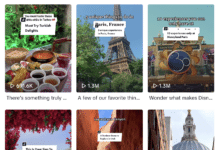As social media users recede into private spaces, personal messaging apps and ‘dark social’ is social listening a worthwhile exercise for brands?
More people than ever use social media every day. In fact, 67% of the entire British population use a social platform, three quarters of whom actively engage or contribute their own posts monthly. This is fairly typical across the Western world and in some parts of Asia these numbers are even higher.
That’s a lot of information about what people think, what they care about, what they’re feeling. And some of that information is about your company, or your industry, or even just some topics related to the problem your product solves. Either way, some fraction of that huge sea of noise is invaluable market research for your business. It’s not asked for in a survey, but published without prompt, willingly. It is truly authentic and a real reflection of honest human thoughts.
Social listening is tapping into those conversations, and gaining insight into what’s in the hearts and minds of our past, present and future customers.
Is It The Same As Social Monitoring?
Sort of. They’re very similar activities, and often done using the same tools. But the structure and process is different.
Social monitoring is an ongoing system of searches, alerts and responses to people on social media mentioning your brand, products, competitors or industry topics.
Social listening on the other hand is more of an isolated piece of research into those conversations online. It’s an analysis of what they mean for your company, or an upcoming campaign. Think of it like the difference between manually checking your car’s oil with a dipstick and rag (listening) versus just driving along with dashboard lights coming on when something needs attention (monitoring).
Is Social Listening Still Relevant Today?
There’s no doubt that it’s become a lot harder to gauge what people are sharing in social media now that more of us are spending time on the platforms known collectively as ‘dark social’. We’re also increasingly sharing content that is visual rather than written.
Back in the days of open text data on sites like Twitter, Tumblr, Reddit, blogs etc it was arguably easier to take a read on what the world was thinking. Now that those sentiments are being expressed through non-searchable imagery and video, and on non-searchable platforms like TikTok we have to understand the limitations of the social listening exercise.
However, much consumer opinion is still expressed on those older platforms. People are far more likely to discuss your products in a tweet, than do so in a snap on Snapchat. And this distinction is most pronounced when opinions are strongly negative or positive, with people using the more traditional platforms for venting or advocating a brand.
Is Social Monitoring Still Relevant?
Again, there are challenges as the social media landscape changes, but monitoring your brand on the available and relevant channels is a must. Your customer service team should be directly integrated with your monitoring process and tools.
It could be said that customer service is at the heart of great modern marketing. It’s the one activity that shows how you treat your customers day to day, and therefore what kind of business you are, what human values you hold.
If People Love People, Brands Need To Be Human
We connect with brands emotionally, much like we do with people. According to McKinsey, 70% of buying experiences are based on how the customers feel they are being treated.
Recent years, and the rise of social media, has made transparency a key attribute of any modern brand. Consumers demand far more in terms of ethics and ethos from businesses than they ever did, and this will only continue to develop further.
Through monitoring social media for mentions of your brand, both good and bad, you gain opportunities to put on public display the human side of your business. You get to show the world how you think customers should be treated.
So regardless of new platforms and media formats, there will always be places online that are rich in easily searchable insights into what people think about your brand and products. The opportunity remains to be proactive in responding to those, and showing us who you are and what you stand for.
Featured Image by Donald Giannatti on Unsplash
Want to learn new creative and marketing skills with me? Check out upcoming courses on topics like SEO, content marketing, copywriting and podcasting.
What's trending in digital marketing?
Stay on top of the latest news, tips, tools and updates in digital. Just for people in marketing and business. No fluff, no ads, no spam.
Join thousands of readers keeping abreast with it all, every Thursday.
















